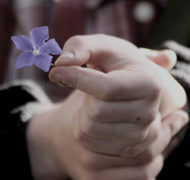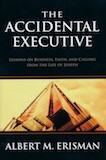Books on Work: Die Empty, week two
Blog / Produced by The High Calling
When I started college my plan was to become a doctor, so I chose to enroll in a pre-med curriculum. My first chemistry class convinced me that my future was not medicine; I faced another 13 hours of the subject and I knew that simply wasn’t going to happen.
Medicine had been my father’s dream, transferred generationally. He had wanted to go to college and become a doctor but the Great Depression intervened, ending that dream. After high school, the would-be doctor instead went to work in the only place offering jobs—the oil fields of East Texas. He hoped his son would pick up the dream where he left it. Medicine—being a doctor—remained his passion, long after life made other plans.
Once you know or understand what your passion is—what Todd Henry in Die Empty: Unleash Your Best Work Every Day calls your “productive passion”—much becomes clear. Choices become easier; priorities more obvious. This isn’t the passion people refer to when they say “follow your passion;” that tends to be a self-focused passion. Instead, productive passion not only motivates you but also helps others.
Defining your productive passion is one of the steps toward understanding and achieving the act of “dying empty.” Dying empty isn’t about working yourself to death to show or prove what you’ve done. It is finishing each day, and eventually your life, having accomplished what is important and meaningful—especially in the service of others.
A second step toward dying empty is to be “fiercely curious.” Henry has numerous suggestions, including asking people for a list of must-read books; keeping a journal for writing down statements, ideas, thoughts, odd quotes, unusual things one sees; and simply asking questions. One of the more pointed things he says is that everywhere you look today people are bent over their phones. Our phones may provide entertainment and distraction but they certainly won’t provide direct and unmediated engagement with others.
A third step is stepping outside your comfort zone. We can offer quite a number of excuses for not taking risks, Henry says—the love of stability and the fear of harm are two. The risks can be real, but eventually, “this craving for safety will become a suffocating force. It will cause creative death. Remember, safety isn’t really an option, it’s only a temporary reprieve from the inevitable.” Clinging to safety means we will forever ignore opportunities.
We can’t grow when we play it safe. We learn from mistakes. Failure is an option, and it can be used to learn and grow. This doesn’t mean embracing foolhardy things, but it does mean embracing what you recognize as real opportunities.
Faced with more required hours of chemistry than I knew I could stomach, I had to figure out what I would be studying. What I eventually chose made more sense for my background and inclination—journalism. I never thought of it as a calling; I never considered writing my calling after I left journalism. Writing was a part of everything I did at work.
I wouldn’t have been able to articulate it at the time, but my calling, and likely my productive passion and what totally motivates me, is breaking through into new ways of accomplishing work—changing how work gets done. The critical consideration here is how people do work; my orientation is helping people do work better, create something, and achieve something.
And you won’t achieve that something by playing it safe.
Here’s how not to play it safe: Define your passion. Be fiercely curious. Step outside your comfort zone.
Die empty.
Join us for a live discussion with Todd Henry, author of Die Empty: Unleash Your Best Work Every Day this afternoon, November 11 at 3p.m. ET. Just click here to join us. On Monday mornings in November we are making our way through Die Empty: Unleash Your Best Work Every Day. Don’t have the book? Buy it here, or here. The winner of last week's giveaway is Sheila@LongingsEnd. Congratulations, Sheila, I'll be in touch! Join us next week as Cheryl Smith leads us in discussing chapters 7-9.





